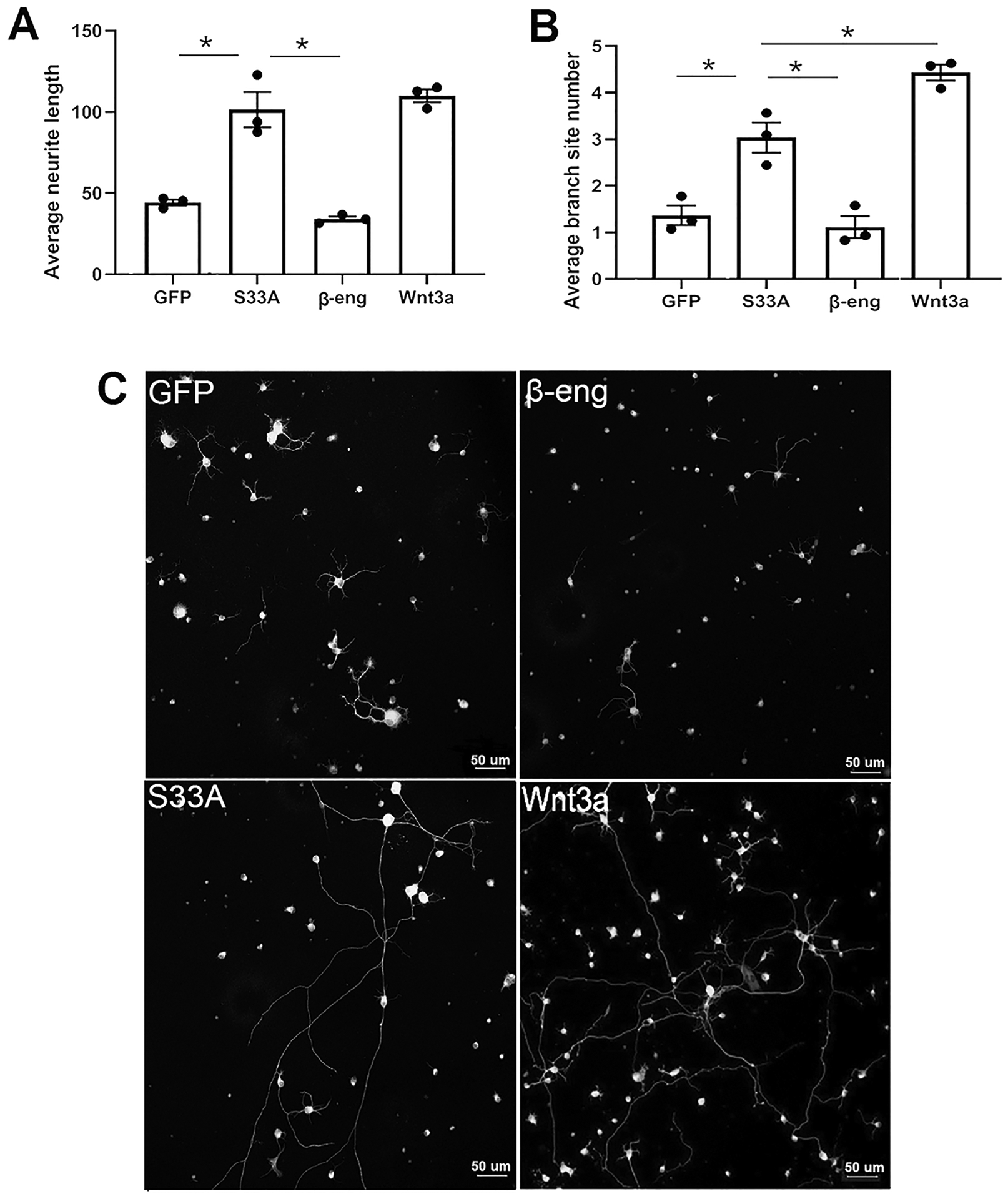Figure 1.

Wnt signaling in Muller glia increases RGC neurite growth and neurite complexity in co-cultures. (A) & (B) Bar diagrams indicate that induced Wnt signaling in Muller glia (β-catenin-S33A) increases RGC neurite growth and neurite complexity (branch site number) compared to inhibited Wnt signaling (β-eng) and control Muller glia (GFP) cells. Induction of Wnt signaling in both Muller glia and RGC further increases neurite complexity of RGC. Average neurite length and average branch site number per cell is represented as mean ± SD. Each point is an experimental replicate that indicates an average of neurite length or average of branch site number of approximately 100–200 RGCs. *p<0.05 (ANOVA, Tukey’s multiple comparisons test). (C) Representative images showing increased RGC neurite growth and neurite complexity when co-cultured with Muller glia with induced Wnt signaling compared to inhibited Wnt signaling and in control Muller glia. Soma and neurites of RGCs were detected with anti-β-III tubulin antibody staining.
